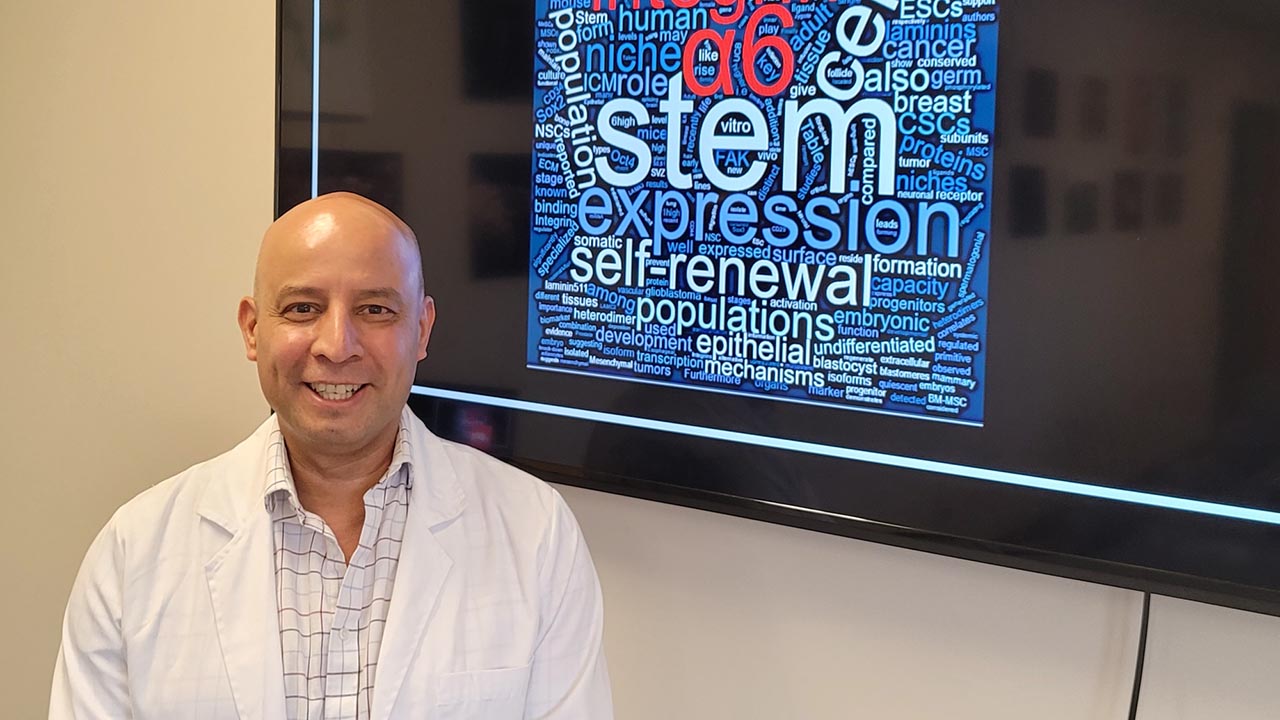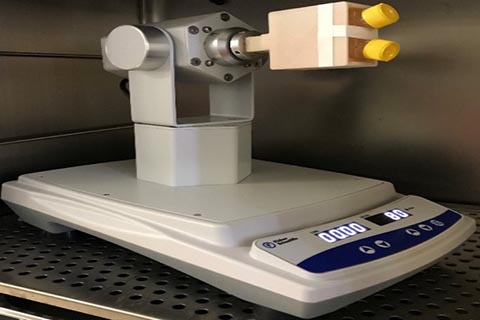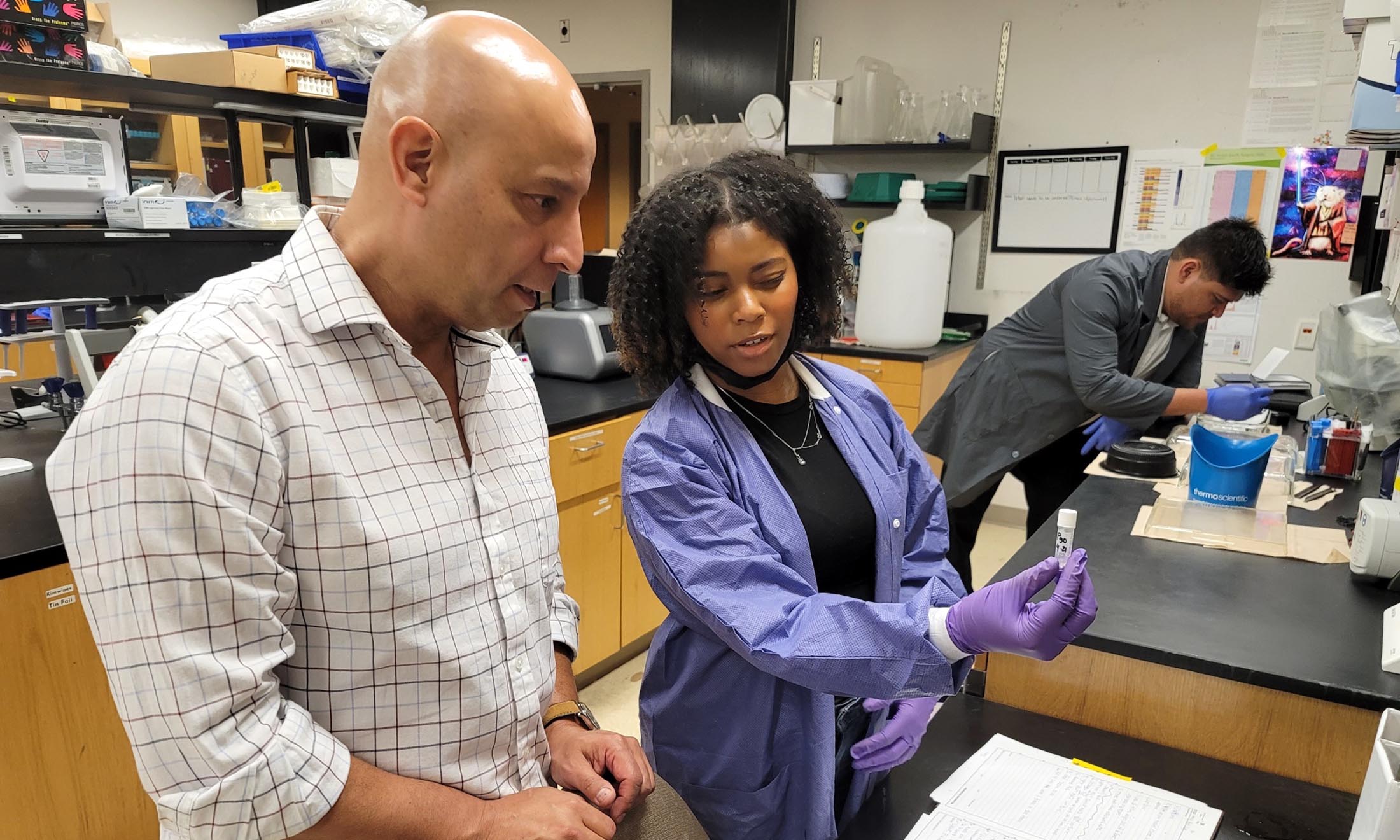OU professor studying effects of microgravity on human pluripotent stem cells
Research could lead to better understanding of its effects on humans in space, potential use in regenerative medicine

As NASA prepares to return to the moon in 2025, Dr. Luis Villa-Diaz and a team of researchers at Oakland University have been studying the effects of microgravity — the closest that we can get on Earth to zero gravity, like that found on the International Space Station — on human pluripotent stem cells (hPSC). These cells have the ability to remain undifferentiated by self-renewal mechanisms or to differentiate into virtually any cell type in the human body.
Dr. Villa-Diaz’s lab has been doing research with human pluripotent stem cells like embryonic stem cells approved by the federal government and with induced-pluripotent stem cells generated in his lab.
“Before we go back to the moon or colonize Mars, we need to investigate what’s going to happen to every single cell in the body in that environment,” said Villa-Diaz, an assistant professor in the Biological Sciences and Bioengineering departments at Oakland University. “In regular gravity, hPSCs are able to differentiate, but we wanted to see whether they are able to differentiate in space or under microgravity conditions. We found that they are, but to a lesser degree. We also observed that they proliferate faster. This confirms that microgravity enhances their self-renewal, but prevents differentiation.”
This indicates that the behavior of hPSCs is different in microgravity conditions.
This research, which was published this month in npj Microgravity — an open-access scientific journal dedicated to covering important research in the life sciences, physical sciences, and engineering fields — could lead to a better understanding of the effects of microgravity on humans in space, as well as its potential use in personalized and regenerative medicine.
“One potential application of this research on Earth is that we could produce more pluripotent stem cells in a faster way if we grow them in microgravity conditions,” Villa-Diaz said. “For example, hPSCs can be induced to make cardiomyocytes, which are cells of the heart. If I have a heart attack, billions of my cardiomyocytes are going to die. In the future, if we want to regenerate the heart with cell transplantation, we will need to replace those cells with healthy cells, and the faster way to get that large number of cells required would be through microgravity.”

Working in collaboration with graduate and undergraduate students and faculty from the Department of Biological Sciences, Department of Computer Science and Engineering, and Department of Bioengineering at Oakland University, Villa-Diaz designed a fast-rotating 2-D clinostat to study the biological effects of simulated microgravity on hPSCs.
“We put the cells into rotation in this device in an incubator and then we grow them and see what happens,” Villa-Diaz said. “We grow them for five days and then stop. What we observed is their proliferation actually increased compared to normal gravity conditions.
“At the same time, another experiment we did is we induced differentiation during the five days. What we observed is the cells are able to start differentiating when we provide these signals in microgravity; however, compared to normal conditions, their differentiation is stunted. Microgravity is kind of fighting the differentiation because it’s actually enhancing their self-renewal and preventing differentiation.”
Using RNA-sequencing analysis, researchers found that PSMD11, a protein coding gene whose role is to degrade other proteins — particularly those used in cell differentiation — was highly expressed in almost every single pathway modified under microgravity conditions.
“Essentially, PSMD11 is keeping them from differentiating,” Villa-Diaz said. “If we can figure out a way to ‘turn it down,’ we can induce differentiation in microgravity.”
In addition, learning more about the role of the PSMD11 gene on differentiation in normal stem cells could also lead to a greater understanding of its impact on abnormal stem cells, such as cancer stem cells.
“If microgravity enhances self-renewal in cancerous cells and we have determined the mechanism that does that, we can start targeting those particular signaling mechanisms and prevent their proliferation,” Villa-Diaz said. “This is important because if microgravity or zero gravity affects cancer stem cells in the same manner that hPSCs, it would have bad implications for the health of astronauts in space.”
The research is being supported by funding from the Michigan Space Grant Consortium, Oakland University REF funding, and a grant from the National Science Foundation.


 July 21, 2022
July 21, 2022







